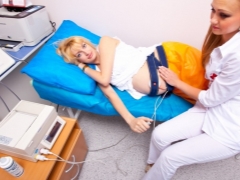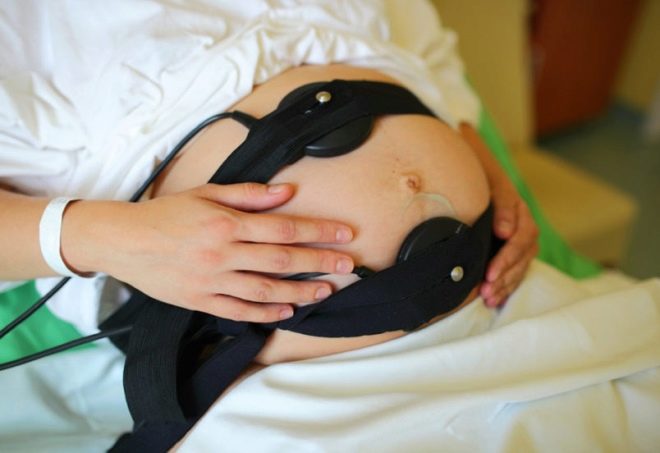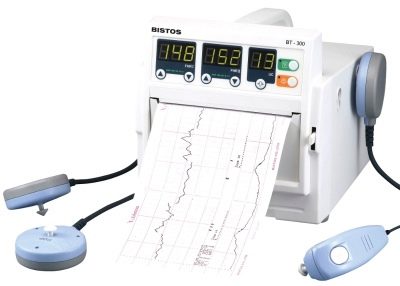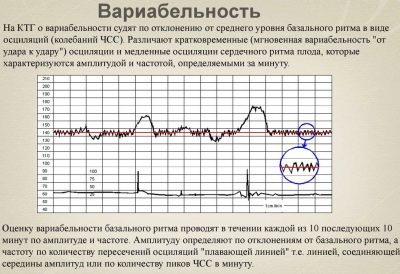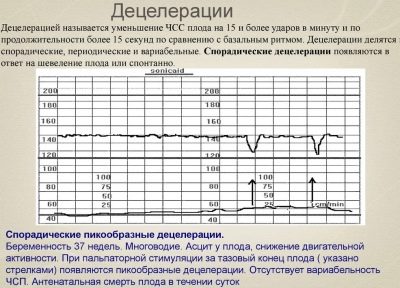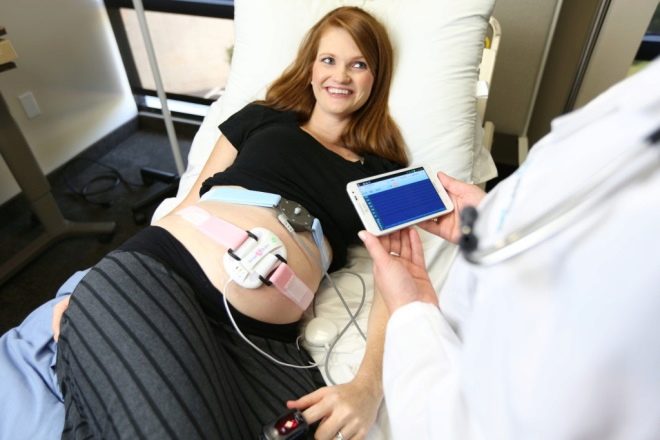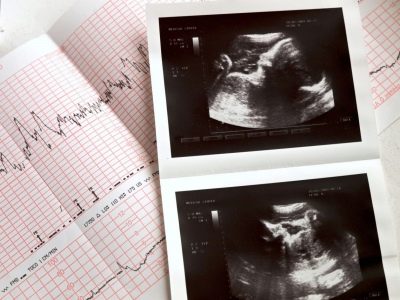What does 8 points mean for CTG?
Knowing how the baby feels in her mother’s tummy is very important. To do this, doctors use different methods. One of these studies is CTG. The result often puzzles expectant mothers. This article describes what the 8 scores assigned to CTG mean.
How is the assessment done?
This research method is truly unique. The physician can obtain the necessary information about the condition of the child, even without conducting any invasive examinations. It is very convenient and well tolerated. This contributed to the great popularity of its holding during pregnancy.
During the examination, the doctor determines how often the baby's heart beats, as well as how the walls of the uterus of his mother are reduced. Using this method, you can also determine the state of the motor activity of the fetus.
The uniqueness of this study is that it can be carried out at very different periods of carrying a baby. It can even be performed directly during childbirth. Such monitoring allows you to determine the viability of the baby, as well as timely identify various violations of labor.
Experts believe that pathological disorders are best determined at 32-34 weeks of intrauterine development of the baby. In this period, the baby, who is in the tummy, has its own daily cycles of physical activity. So, in the first half of the day it is more active. Also, the baby can be active in the evening, after 19-20 hours.
To determine the studied parameters of the doctor using a special device with a sensor. It is strengthened on the tummy of the future mother. Afraid of this study is not worth it. It does not bring any pain or discomfort. The calmer a woman is during the examination, the better her child will carry him.
The place for the imposition of special sensors is not chosen randomly. Previously, with the help of a stethoscope, the doctor will determine the place for better listening of the baby's heartbeats. This will help to get more accurate results.
During the study, ultrasonic waves are used. You can see the graphic image on the monitor of the device. Decoding of the obtained values is carried out in one minute.
Doctors use a special scale to assess performance. It contains a variety of evaluated indicators. These include: variability, acceleration, active movements of the baby, deceleration, as well as the basal rhythm.
Each of the estimated indicators is assigned its own number of points. In the end, they are summarized, and the final result is obtained. It is his and evaluates the doctor.
Many future moms try to carry out an independent interpretation of the values obtained. Immediately it is worth noting that it is very difficult. In order not to be mistaken, you need to consult with a specialist.
How to decrypt?
The Fisher scale used in this study is used in different countries of the world. Each of the studied clinical indicators included in it is assigned from zero to two points.Then they are added up, and another estimated parameter is obtained, called by specialists the fetal status indicator (PSP).
In order to understand how the obtained results will be interpreted, it is necessary to tell about what the estimated indicators are. The average heart rate is also called basal rhythm. They show how often the baby's heart beats.
The following estimated indicator - variability. Experts identify several clinical types - short-term and long-term. The vegetative nervous system significantly influences the results obtained in the future. If the baby's heart rate is variable, then this is a good sign. Its decline is already an unfavorable sign.
Deviations from the basal rhythm of 15 or more beats are called acceleration. They are assessed, as a rule, within 10 minutes.
Decoupling - reduction of the basal rhythm by 15 or more beats per minute, which also lasts at least 15 seconds. This condition can be compensatory if it occurs after a period of fetal activity.
To assess the pathology, spontaneous slowdowns of the baby’s heart rate occurring during the rest period of the mother are also taken into account. The appearance of this clinical sign requires a more thorough diagnosis.
The baby at a certain stage of its prenatal development begins to actively respond to various external stimuli. Acceleration appears on such an impact. This reaction is quite physiological and indicate a normal development of the child in the maternal tummy.
A comprehensive assessment of the obtained values is carried out taking into account the following indicators:
- Under normal conditions of pregnancy, the basal rhythm should be in the range of 120-159 in 60 seconds. This indicator is very important to assess when a woman is at rest.
- Rhythm variability in the normal course of pregnancy should be in the range of 10 to 25 beats in 60 seconds.
- In ten minutes, the number of accelerations normally should be from two or more.
- With the normal development of pregnancy, deceleration is not recorded.
These figures are recorded if the course of pregnancy develops well. Different pathologies lead to the fact that these indicators change.
If only one estimated parameter changes, then this cannot be assessed as a serious violation. Assessment is complex. That is why these indicators are summarized. In the future, only their sum is estimated.
It is important to note that the duration of the study is very important. If it is carried out earlier than at 32 weeks gestation, some of the parameters studied may be changed. The shorter term of prenatal development of the baby is manifested by lower variability.
What does the result mean?
8/10 points obtained as a result of the study, are very good indicators. This indicates that the process of intrauterine development of the child proceeds as it should.
8/9 points, obtained after conducting a study at 36-37 weeks of pregnancy, also means that the future mother and her baby there are no severe pathologies.
The sum of the values obtained may vary. Obstetricians and gynecologists note that, at present, it is less and less common when conducting research in the 3rd trimester of pregnancy. PSP is 8/10 points. Such a normal result is an indication for further monitoring of the future mom and her baby’s health.
Reducing it to 7/8 points requires more careful attention. In such a situation, expectant mothers can be assigned ancillary research methods that require the exclusion of pathologies during her pregnancy. In this case, you may need to re-conduct cardiotocography.
How to save the result?
Many future mothers are concerned about the question of what they should do to ensure that CTG indices remain good until the very birth. First of all, it is not worthwhile to strongly emphasize only on cardiotocography.
For a comprehensive assessment of the condition of the future mother and her baby, other studies can also be conducted. One of these is an ultrasound scan or lab test. The indications for their conduct are established by the attending physician, who oversees the course of pregnancy.
8/10 points obtained by CTG are a good result. In order to support this expectant mother should carefully monitor their daily routine. The closer the delivery, the more closely you should monitor your diet and daily schedule.
Regular walks in the fresh air will help provide the body of the future mother and her baby with oxygen. This will help keep the baby's physical activity at the proper level. The duration of the walk should not be less than 30-40 minutes.
Limiting psycho-emotional stress and intense physical exertion is also very important. You can understand the excitement of the future mom before giving birth.
However, it is always worth remembering that the baby in the final period of its prenatal development feels very well any mood of his mother. In order for the indicators of heart activity and physical activity of the baby to remain within the normal range, the expectant mother should not be very nervous and worried.
For what it is necessary to do CTG during pregnancy, see the following video.
